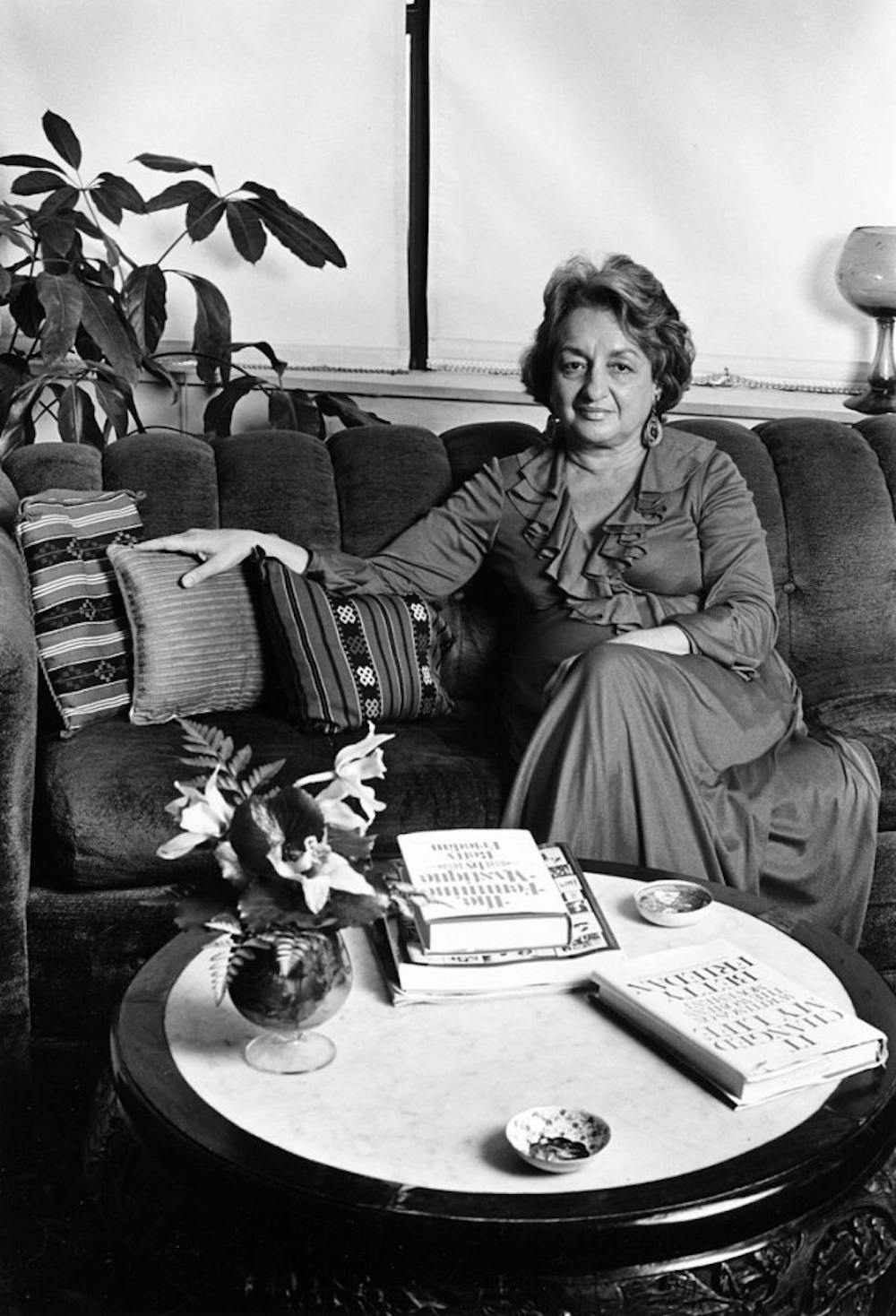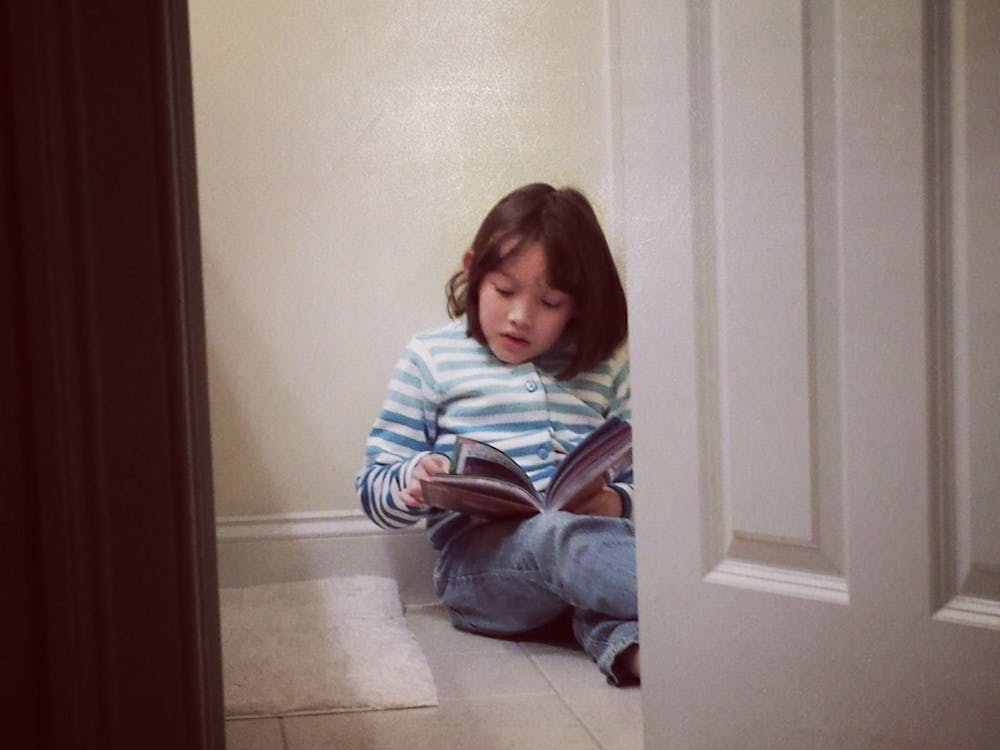
Before you dismiss this as a ranting feminist article, hear me out. Even in liberal, American cities about 23% of men find feminism unnecessary. Even 7% of women find feminism unnecessary. There are countless photos of women on the internet holding up signs which read: “If I’m wearing a top like this I want you to look” and “I don’t need feminism because I love men!” There are endless other examples of women who are not only complacent but adamant that their role in society is justified.
The anti-feminist movement sees feminists as man-haters, whores, and cult-like. As a feminist, I confidently tag these labels for what they are: blatant misunderstandings. I am not a man-hater and I am not a whore. By supporting women’s rights, I am not a misandrist but an equalist - that’s what feminism is all about.
I respect your decision to stay home and raise your children if you so desire, but I want equal opportunity. My choice is my own and other women negating the view that I can do what I want with my body simply perpetuates our long history of misogyny.
If we’re striving for equality, then we must inherently be coming from a place of inequality. So before deciding that we as a society no longer need feminism, we should remember that, as Martin Luther King Jr. said, “Our lives begin to end the day we become silent about things that matter.”
It’s important to look backwards and be reminded of how far we’ve come, as well as how far we have yet to go. The first wave of American feminism began in the 1890s. So, what have we achieved in the last 130 years?
First wave feminism was mainly a response to women’s lack of legal and property rights. It focused heavily on ownership equality: the idea that women should be able to own their own stuff, rather than their husband owning them and all their property.
This wave of American feminism concluded in 1919 with the passing of the 19th amendment, which gave women suffrage. To put this into context, Sweden granted conditional women’s suffrage in the 1700s. In Switzerland, where I grew up, voting rights were not granted to women until 1971, and in Saudi Arabia women were first allowed to vote in December 2015 (and even then, only in municipal elections).
This places the U.S. somewhere around average for suffrage. However, we still do not have gender equality under the constitution. Although passed in the senate on March 22, 1972, the Equal Rights Amendment has - to this day - not been ratified by enough states to gain protection under the constitution.
Second wave feminism (1960s-1980s) covered a much wider breadth - it looked at how women were treated in both their personal and professional lives. It shifted its focus towards establishing reproductive rights, decreasing the wage gap, and enabling women to explore their sexualities. In 1963, Betty Friedan wrote the highly controversial Feminine Mystique, which criticized the idea that women could find fulfilment through housework and child rearing. The second wave philosophy that a woman’s personal life reflects macro-level political structures (coined “the personal is political”) lives on in every contemporary social justice movement.
The 1960s were also when stereotypically radical women “ravaged” America: from the No More Miss America protest of ‘68 to women officially being granted the right to register for the Boston marathon in ‘72. And yet, equality in sports and social perception are things feminists today are still fighting for. To date there has never been a female Navy SEAL, and the first male NFL cheerleaders performed at the Superbowl this year.
The world we live in now might seem advanced compared to the past - from husband’s ownership to The Good Wife Guide in 1950 - but some of these oppressive legacies live on. Even focusing solely on marriage: a woman was handed from her father to her husband as property (the tradition of being given away), the woman wears a white dress to symbolize purity (virginity), and some cultures today still engage in sheet ceremonies (wherein families inspect bed sheets the morning after consummation for the wife’s blood - a crude and unreliable sign of her virginity).
If a woman is not a virgin at marriage, she’s seen as a cracked or broken vase that no one wants to buy. The blame is placed on the bride, not the man who did the breaking. This segways us back into today: fourth wave contemporary feminism.
Now more than ever, feminists are looking at the roles which compounding identities, international experiences, and rape culture play in the female experience. Victim blaming and #MeToo are hot topics in feminism today - for the first time ever, directing blame at the perpetrators.
Intersectional analysis is a contemporary phenomena; the idea that inequitable identities compound in resulting discrimination. To steal an example from Kimberle Crenshaw, the inventor of intersectionality, let’s look at school detention. If black girls are six time more likely to be placed in detention (which they are), it is not only because they are girls and not only because they are black but because they are both.
This logic works both ways. Fighting for and achieving sexual equality trickles into other social movements for equality, too: as Dorothy Vaughan said, “progress for one of us is progress for us all.”
According to the Department of Justice, females 16-19, are “four times more likely than the general population to be victims of rape, attempted rape, or sexual assault.” Current social psychology studies show females are more agreeable in public goods dilemmas. Women are the caretakers - we put others’ needs above our own. We are made to feel small and to behave agreeably only to be pushed aside.
These are just some of the many underlying issues which make up women’s worlds today - mine included. Women continue to face deeply rooted historical stereotypes, reach ceilings in the workplace, and find themselves wedged between victimization and demonization. An end to inequality could mean diversity in executive professions, more explicit rights to own one’s body, academic integrity, and personal respect. A world I am fighting to be a part of.





